Studies showing cancer reversal / shrinking
-
This post is deleted! -
Just noticed these replies @DavidPS @Mauritio William koch only used it for 1 or a few injections mostly (combined with protein aka methionine restriction while its doing its thing to boost response further) . So orally is extending things for lower potency over a longer time. doesnt sound like something beneficial to use generally at these amounts, but specific for outweighing effect on tumors (& other dysfunctions by the book) that looks profound. thanks something to weigh with diabetes, if the need to deal with tumors outweighs or if it can be offset at wounds locally e.g using co2 baths potentially. (radiation / chemo is probably not good for diabetic wounds either)
in the animal study below showing 80% complete remission (amazing result u dont see elsewhere, or without extreme toxicity) they tested high doses for 1 month on various animals. no significant detriment in behaviours, or toxicity to reproductive system, had healthy offspring, organs tested were fine
when they injected it they had initial pain, and eventually some swelling until 10 days after treatment ended (possibly repeat injections?).
So on the macro level at least looks safe enough in general condition considering results for 1 month, but with some proinflammatory effect. But this one, weirdly using much lower dose, but for longer at 6 weeks, showed impaired wound healing and some detrimental measures doi.org/10.1042/CS20050026 and over months showed kidney changes https://pubmed.ncbi.nlm.nih.gov/9740317/
whether creatine can protect from these changes too outside of the heart e.g in kidneys, not suremy take on that is the large doses arent showing much toxicity so seems its based on duration, seems to me its the proinflammatory effect building up creating damage over time
- Btw with right approach it might not need to be used for over a month. Not sure but it showed effect at 10 days in the animal study but that was before it was established. The human study didnt use creatine to boost the effect further. and theres curcumin which might make it more effective too. thats if using orally
@Mauritio 80% complete remission in animal study when vitamin C + creatine was added too
https://pubmed.ncbi.nlm.nih.gov/16112157/the creatine is there for extra safety for the heart and for some reason boosts the effect further
However, in all the normal types of cells tested, methylglyoxal was found to inhibit mitochondrial respiration in only cardiac cells. Creatine, which is abundantly present in these cells, could completely protect against the inhibitory effect of methylglyoxal
& dehydyroascorbic acid form of Vit C is another thing with 2+ carbonyl groups so there to boost effect at decent doses like 500mg+, im guessing it will go up with the ascorbic intake. like taking ubiquinol raises ubiquinone (actually raises ubiquinone more than taking ubiquinone)
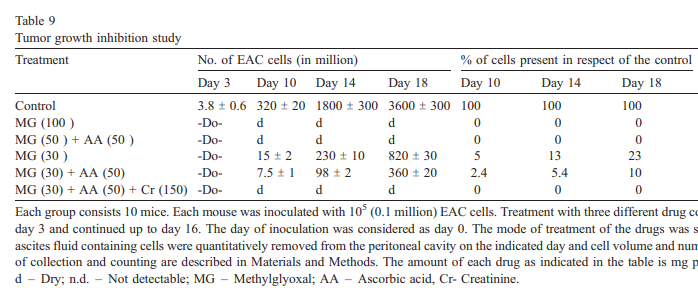
both methylglyoxal and methylglyoxal plus ascorbic acid treatment had significant inhibitory effect on cell proliferation. Moreover, treatment of methylglyoxal plus ascorbic acid plus creatine not only completely inhibited the cell proliferation but also made the peritoneal cavity completely dry.
human trial is here https://bioenergetic.forum/post/34639
-
@cs3000 Nice ! You might want to send this to Georgi , maybe he'll do a small study on it.
-
@cs3000 dehydroascorbic acid can be made by taking vit c with methylene blue . the anti cancer effect is pro ROS because cells take up dhaa and in converting it back to vit c it creates ROS which healthy cells have capacity to deal with while deranged cells generally dont so they get killed by autoschizcis mechanism (a specific type of cell death)
-
@cs3000 said in Studies showing cancer reversal / shrinking:
William koch only used it for 1 or a few injections mostly (combined with protein aka methionine restriction while its doing its thing to boost response further) .
At what does did Koch use it for injection?
-
@Mauritio good idea i sent an email to idelabs
@eduardo-crispino thanks. they used 500mg normal vit c
curcumin inhibits glyoxalase 1 so should boost the effectiveness further (curcumin + vit c + creatine) but also might make normal cells more vulnerable, tho has some anti inflammatory effect too.
https://pubmed.ncbi.nlm.nih.gov/18946510/
good writeup
https://www.cancertreatmentsresearch.com/methilglyoxal/@alfredoolivas his book on archive.org the chemistry of natural immunity has more details
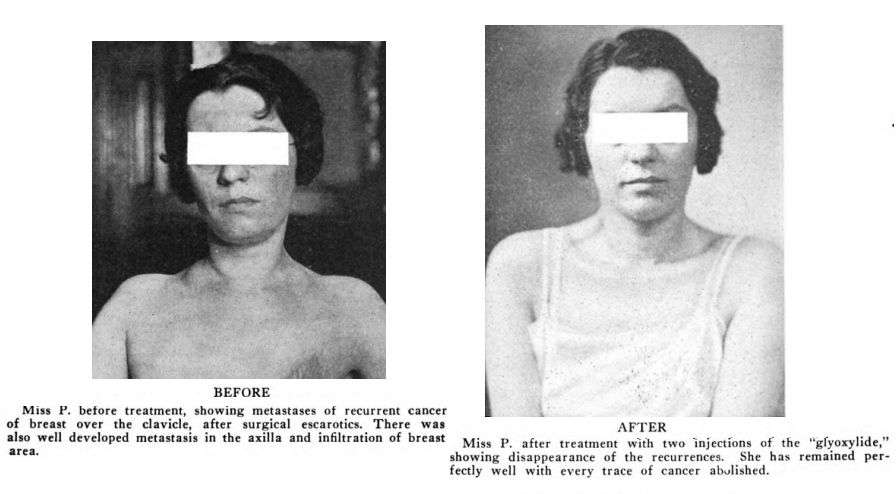
-
10.1097/CMR.0000000000000577 https://pubmed.ncbi.nlm.nih.gov/30615010/
https://www.cancertreatmentsresearch.com/10-cases-of-complete-remission-from-stage-4-cancers-after-using-supplements-or-repurposed-drugs/
https://www.jaad.org/article/S0190-9622(04)03675-8/fulltextWe report a long-term complete remission of cutaneous melanoma metastases related to the use of a folk treatment with the plant Thymus vulgaris.
.Multiple cutaneous melanoma metastatic nodules were diagnosed after histologic and immunohistologic examinations (Fig 2, A and B). There were no lymph node or visceral metastases on clinical, analytical, or staging examinations (including body computed tomography, cerebral magnetic resonance imaging, and bone scintigraphy). The patient was staged at AJCC stage III, but she refused the proposed treatment, which consisted of hyperthermic perfusion of the left leg with melfalan and interferon.
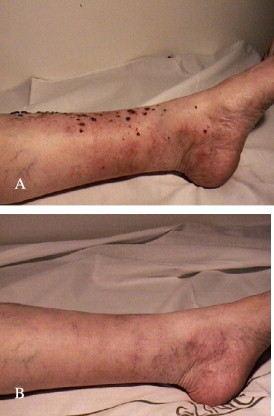
- A few weeks later, a progressive disappearance of all nodules was noted
Histologic examinations confirmed the complete regression of cutaneous metastases (Fig 2, C-F). The patient stated that she had been using dried thyme (ground leaves and stems) for herbal tea and for topical applications in compresses over the lesions. No evidence of disease in this patient is apparent after 5 years of follow-up.
No dose mentioned.
Dried Water extract shows potent effect at 500mg/kg in mice in other areas like lowering brain MDA. https://doi.org/10.1016/j.fct.2009.05.007
adding 1g - 10g of thyme stems to 1 kg diet showed inhibiting number of new tumors by 53% in the rat part, but no significant effect found on volume
But in the mice part of the study it showed great effect (breast tumors)
https://pmc.ncbi.nlm.nih.gov/articles/PMC6479806/#sec2-ijms-20-01749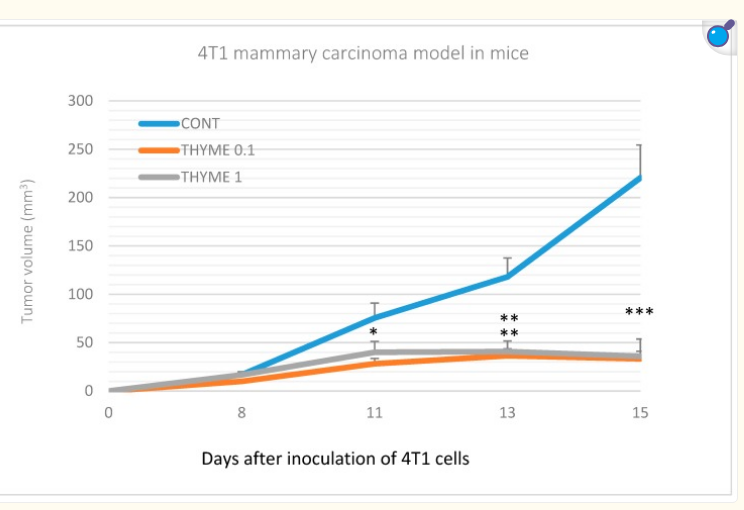
It stopped growing completely ~2 weeks (what would have happened if it was a couple weeks longer?)
-
Moreover, the T. vulgaris (THYME 1) dose significantly lowered total cholesterol levels by 11% (p < 0.05) versus THYME 0.1. A significant increase in serum glucose by 8.5% (p < 0.05) was observed in the THYME 0.1 group and by 19% (p < 0.001) in the THYME 1 group versus the control (data not shown). No differences in final body weight were observed between any groups. A significant increase in food intake was observed: +1.6 g (THYME 0.1) and +2.6 g (THYME 1) versus the control (14.7 g/rat/day).
-
By contrast, in mice, a reduced food intake was found in the THYME 1 group versus the control (1.51 versus 2.10 g/mouse/day). The doses of T. vulgaris were safe without undesirable side effects on rats after chronic administration (vitality/activity of animals, hair, mucosa, food and water intake, liver steatosis, hepato/splenomegaly, gastritis, or hematopoietic disorders)
Some methylation differences
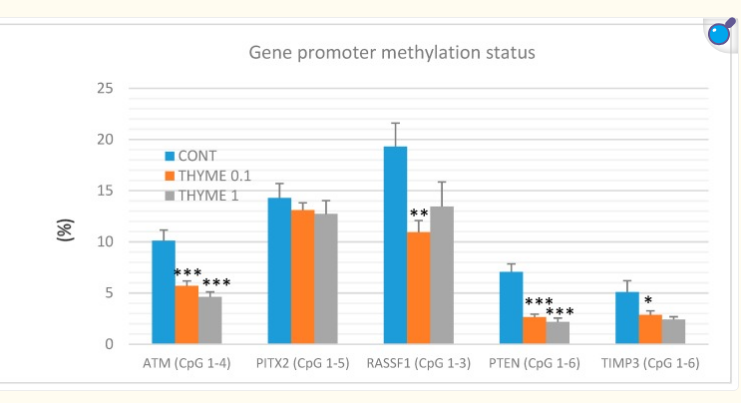
this result is outstanding as it overcomes the anticancer effects of well-validated synthetic drugs used in BC treatment: manumycin A [29] or paclitaxel [30] in the same 4T1 mouse model. In the chemoprevention study, the higher T. vulgaris dose significantly lowered tumor frequency, the most sensitive parameter of rat mammary carcinogenesis, by 53% compared to the control group. Contrary to the mouse model, the reduced dietary dose of T. vulgaris was ineffective in the NMU rat model. This result suggests that the sensitivity of different cancer cells in vivo (chemically-induced tumors or 4T1 allografts with different molecular characteristics) to phytochemicals of T. vulgaris is dose-dependent.
Complete remission of lymphoma with herb combination , 2 months
https://pmc.ncbi.nlm.nih.gov/articles/PMC9900160/#section2-15347354221147515-
The patient achieved a long-term complete remission and good quality of life over an 8-year follow-up under maintenance care of CHM. To the best of our knowledge, this is the first complete case report on DHL involving CHM.
-
Because of intolerance to the intensive chemo-immunotherapy, he stopped the chemotherapy at the third cycle about 7 weeks before he was recommended to our clinic in March 2014. It should be noted that this patient came to Chinese medicine treatment 7 weeks after the third cycle of chemo-immunotherapy which is longer than the usual 4 weeks from prior treatment
Another case of an 82-year patient with DHL was reported by Zaman et al.10 The patient initially received 3 cycles of R-CVP (Rituximab, Cyclophosphamide, Vincristine, and Prednisolone), but could not continue the intensive course of chemotherapy due to his compromised renal and blood parameters, and the patient died with the progression of the disease.
Cheema presented with another DHL case of unusual response after sequential aggressive chemotherapies.11 This was a man in his 50s with stage IIA DHL treated by R-Hyper-CVAD (rituximab plus cyclophosphamide, vincristine, doxorubicin, and dexamethasone alternating with methotrexate and cytarabine) but developed renal failure after the first cycle. The therapy was switched to R-ICE (rituximab plus ifosfamide, carboplatin, and etoposide) and induced complete remission. Unfortunately, the patient developed prolonged severe thrombocytopenia (grade 3) requiring a total of 4 units of platelet transfusion. By being treated with autologous hematopoietic cell transplantation (AHCT), he had a good tolerance and remained in complete remission for 1 year. These cases reveal that DHL has a poor prognosis and there is no accepted standard of treatment for DHL. The aggressive immunochemotherapy limits the outcome due to adverse effects or the intolerance of the patients.- the basic prescription was Sijunzi Decoction plus Prunella vulgaris with raw herbs used from March 2014 to March 2017 including Prunella vulgaris 20 g, Sophora flavescens 12 g, Scutellaria baicalensis 15 g, Salvia miltiorrhiza 12 g, Codonopsis pilosula 15 g, Atractylodes macrocephala 12 g, Poria cocos 15 g, and Glycyrrhiza uralensis 5 g. The herbs in the prescriptions were amended according to the patient’s responses. The CHM was administered daily in 2 separate decoctions: for the first decoction, 1000 ml of cold water was added to the herbal mixture, which was then boiled for approximately 50 minutes to reduce the volume to about 250 ml. This decoction was taken each morning. The remaining herbal mixture was used for making a second decoction which was taken each afternoon. This was prepared by using 750 ml of cold water and boiled for approximately 30 minutes to reduce the volume to about 200 ml.
After 2 months of the CHMs used, the patient felt his right groin mass disappeared.
His energy and digestion became normal. Blood tests showed that his hemoglobin and blood platelets became normal. LDH was reduced from 298 to 162 U/L, in the normal range. During the CHMs treatment period from 2014 to 2019, his adherence and tolerability to CHM were well maintained and no adverse events were observed. Follow-up CT imaging on the neck, chest, abdomen, and pelvis in May 2014 showed that the right iliac fossa mass had resolved with no residual mass.
no hematologic toxicity, hepatoxicity, or nephrotoxicity from CHMs were identified. Further follow-ups until 2020 found that he had been living and enjoying a good quality of life almost 8 years post-diagnosis.
It is important to note that the patient had continually received 5-year CHM maintenance care which may benefit his outcomes of long-term disease-free and good quality of life. The basic prescription of CHM used in this case is a well-known formula known as Sijunzi Decoction (SJZ). (they switched to granules later)
Melanoma & Inositol + IP6 , complete remission
In January 2015 the patient presented with a new subcutaneous lesion in his left medial thigh that was biopsied and confirmed to be BRAF V600E mutant melanoma. Left medial thigh melanoma was 3 cm in size. Restaging scans of the chest/abdomen/pelvis revealed a new mediastinal and right hilar lymphadenopathy with multiple pulmonary nodules (Fig. 2). Lactate dehydrogenase was within normal limits and he was staged as having a stage IVB disease.
The patient was offered systemic therapy with both immunotherapy and targeted therapy but he declined both and instead elected to pursue the combination vitamin IP6+inositol (800 mg/220 mg), five tablets in the morning and five in the evening daily. To our surprise, restaging scans 6 months later showed significant improvement. Subsequent CT scans showed continued response with a decrease in the size of the hilar and mediastinal lymph nodes and shrinkage of the left medial thigh in the transit lesion. The patient went into complete clinical and radiological remission after being on the vitamin combination for 2 years (Fig. 2). Three years after relapse, the patient remains in complete remission and continues to take IP6+inositol daily. We have not seen any subjective or objective evidence of side effects that can be attributed to high doses of daily IP6+inositol intake so farAnimal studies have shown that the combination of IP6+inositol provides additive anticancer Fig. 2 Computated tomography with the contrast of the chest before (left) and 2 years after (right) starting inositol hexaphosphate + inositol showing complete radiologic resolution of the upper right hilar lymph node. Inositol hexaphosphate (IP6) plus inositol Khurana et al. 323 Copyright r 2019 Wolters Kluwer Health, Inc. All rights reserved. properties than each given individually
- A few weeks later, a progressive disappearance of all nodules was noted
-
@cs3000 Anyone have the CO2 bath protocol? Want to experiment and see if you can optimize the therapy. Those CO2 suits look silly, and I think you could localize the treatment through a better product. Think CO2 therapy can blow up in the coming years.
-
@periander345 a bath is ~5g malic acid + baking soda per L water (warm instead of hot is better for more co2) for covering body. tried it in an awkward to reach place on my back with a small round plastic container , sawed 2 slits in it and fed a thin tie through. It feels like an absolutely backward approach lol probably better to just lay back on top of a bowl filled to surface. tried glycerin gel and adding powders but doesnt sustain the reaction in small area
the co2 direct would probably only apply to tumors near skin level local to application site (they used tumor graft models) -
@cs3000 hmmm. Very interesting. Could you use something different than Malic Acid? I know people use CA but that stuff is questionable...
-
-
Diisopropylamine dichloroacetate (DADA)
Increases oxidative phosphorylation and lowers lacate
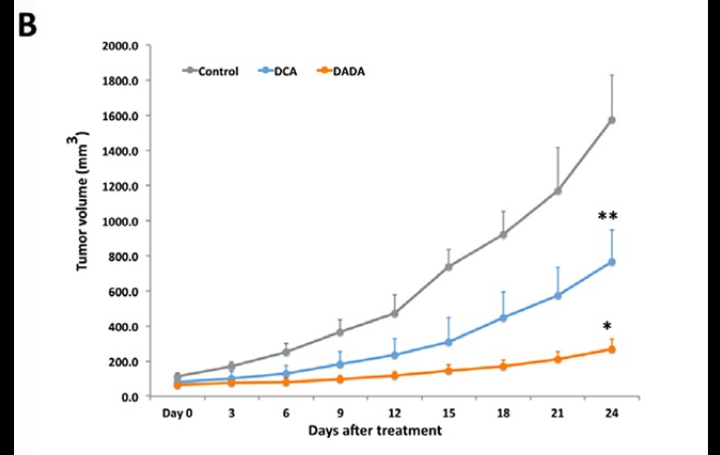
https://pubmed.ncbi.nlm.nih.gov/27582548/#&gid=article-figures&pid=figure-2-uid-1
-
https://pubmed.ncbi.nlm.nih.gov/15132968/
https://sci-hub.st/10.1210/en.2004-0079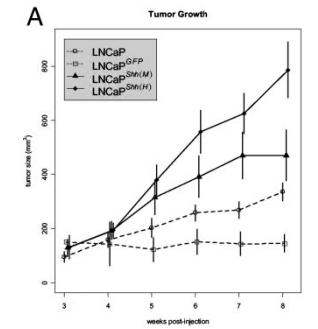
when Shh path gets increased (like when androgens get depleted, with a delay) prostate cancer growsand other tumors like brain tumors ,
this is grafted on so not the same as being in brain, but a sonic hedgehog inhibitor (yeah its called that) created regression & nearly fully by 20 days.
https://sci-hub.st/10.1126/science.1073733
https://pubmed.ncbi.nlm.nih.gov/12202832/
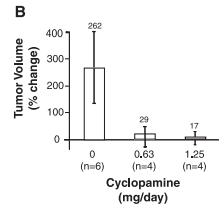
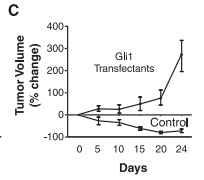
but cyclopamine used has some toxicity concerns its teratogenic causes birth defects during pregnancy. but they said no apparent detrimental effects.- Whatever its biological basis, the general requirement for
Hh pathway activity in medulloblastoma growth represents a
potential therapeutic opportunity, because cyclopamine and other
pathway antagonists can be administered in effective doses with no apparent detrimental effects in rodents and other mammals
orally though stomach acid transforms it so less effective & maybe more toxic https://pubmed.ncbi.nlm.nih.gov/20236786/
https://pubmed.ncbi.nlm.nih.gov/1144444/
also sonic hedgehog path is needed for neuron development so use of inhibitors might be a problem if potent https://pubmed.ncbi.nlm.nih.gov/10375501/
and might be needed for eye damage repair (is in amphibians) https://pubmed.ncbi.nlm.nih.gov/15013805/Instead forskolin should work similarly
rhabdomyosarcoma lines from humans
on the 2 less aggressive types using high dose forskolin stopped or regressd tumors (but gave ulceration at injection sites so had to be done every 2 days nearby)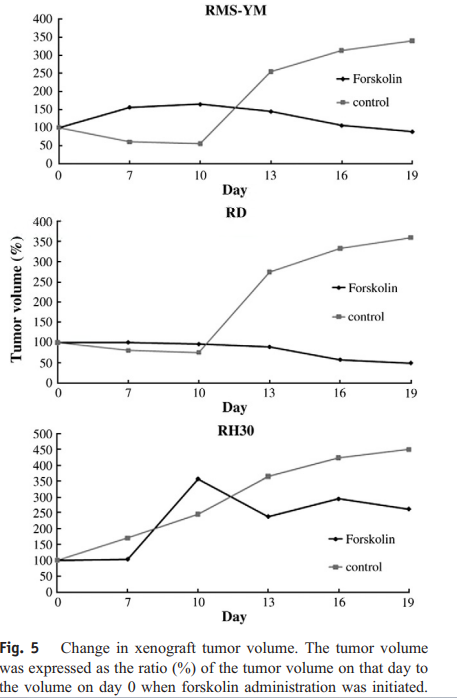
it should be effective at lowering sonic hedgehog path on lower dose orally through cAMP. but higher doses needed to activate cAMP in hypothyroidism. and for general use it might be anti androgen.
- Whatever its biological basis, the general requirement for
-
Melanoma remission by frankincense (boswellia) oil extract
big difference in the dose though 300mg/kg didnt get close , 600mg/kg did but i.p which is generally closer to subcutaneous than taking orally unless oral bioavailability is high.
they dosed once every 2 days
they used Boswellia sacra type not Boswellia serrata
https://pmc.ncbi.nlm.nih.gov/articles/PMC6544398/#s2
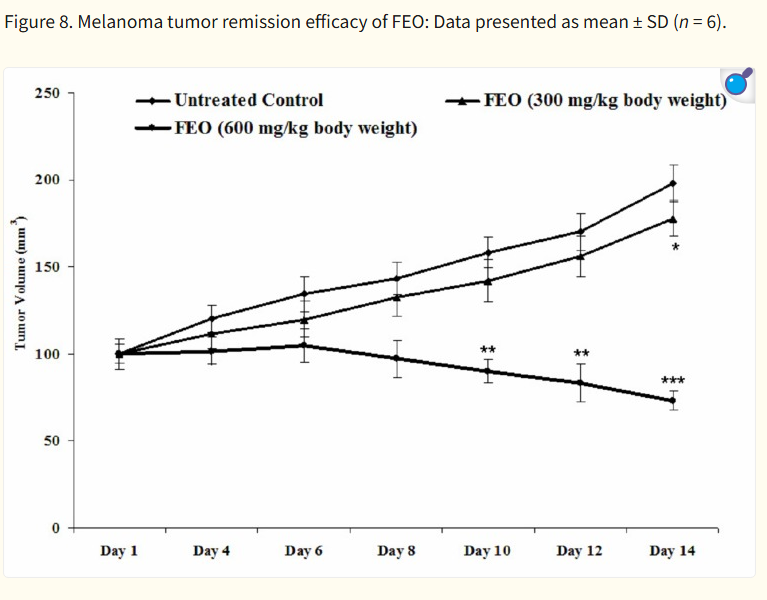
Boswellia serrata trailed on people with brain tumors for lowering edema (less concentration gets there for the full anti tumor effect probably, or different type)
https://pubmed.ncbi.nlm.nih.gov/21287538/In the patient with the highest BS serum levels (5
samples, all positive with an average KBA concentration
of 123.1 ng/mL [range, 53.25-153.49 ng/mL]) one of the
largest edema reductions was observed. His edema volume
was reduced by more than 300 mL from baseline to the
time after radiotherapyProgression-free survival, which could be a parameter for an antitumor effect of BS, did not differ between the 2 groups
In the placebo group, 18% of patients had progressive disease (PD), 36% stable disease (SD), 36% partial response (PR) and 10% complete response (CR). In the BS group, 0% had PD, 62% had SD, 25% had PR, and 13% had CR.
Progression free survival didnt differ , but the boswellia group 0% had progressive disease? so i guess they still died with the non progression because enough tumor was there?
They used 4200 mg/day split into 3 times a day at 85% acids. 1.2g of boswellia acids at a time * 3
In the BS patients, tumor volume (biggest lesion) changed from an average of 24.4 cm3 before radiotherapy to 2.9 cm3 after radiotherapy compared with 19.9 cm3 to 16.1 cm3 in the placebo group
Using boswellic acids orally in rats it only worked before the tumor was established. https://sci-hub.ru/10.1023/a:1006387010528
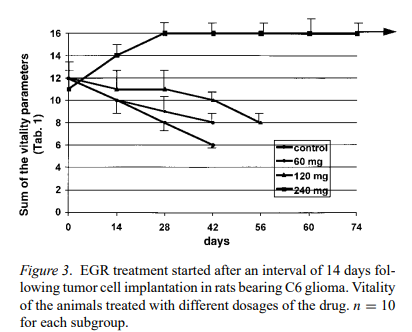
In the first study the Boswellia sacra type might be less toxic to dose high than serrata which has more a-thujene (not thujone though)
They look mostly similar in boswellic acids ratios apart from sacra had much more AKBA too https://pmc.ncbi.nlm.nih.gov/articles/PMC6273064/#sec2-molecules-21-01329
BUT
Looking around ive seen some analysis of boswellia sacra showing 70% a-pinene instead of boswellic acids
https://ultranl.com/frankincense-essential-oil-chemotypes/So different extraction methods give either high % boswellic acids or high % a-pinene for the sarca type
and another study the first authors did used an extract mostly a-pinene https://www.sciencedirect.com/science/article/pii/S2221169115001446
so this study was on a-pinene from Oman boswellia
It is well established that the principal component of FEO is α-pinene with other terpene mixtures
Not sure if this high amount would be safe to take orally in grams, sounds like it though (likely potent GABA effect though)
Terpenes can be irritants at least mildly so probably a good idea to dilute in some oil
i think its got good absorption % orally,
i.p administration still goes through metabolism in the liver if other metabolites play a role or cause lowered amountMastic gum / resin or its oil is high in a-pinene >50% (not its leaves)
~800mg hits ~900ng/ml in humans and its the free form found too
https://pmc.ncbi.nlm.nih.gov/articles/PMC7466295/Some problems: pinene might have a lot smaller half life in humans than rats,
maybe some potential for toxicity in high doses or inhaled but idk how relevant https://pmc.ncbi.nlm.nih.gov/articles/PMC9298155/#S15-
Certified Hojari grade Boswellia sacra gum resins were obtained from the local market. Essential oil was extracted by hydrodistillation method as described earlier [24]. Briefly, Boswellia sacra resins were loaded into 55° C water with a ratio of 1:2.5 (w/v), and mixed with an electromechanical agitator for 30–45 min or until a thick homogenous mucilage was formed. Temperatures of the hydrodistiller were monitored by an infrared thermometer; and pressures were recorded at the condenser terminal. To remove any residual water, collected Boswellia sacra essential oil (FEO) was immediately transferred into a –20° C freezer; and ice crystals were separated from the essential oil.
-
Histological studies revealed that tissue sections from FEO-treated animals did not indicate any detectable pathologic abnormalities as examined by H&E staining. The liver showed normal hepatic lobular architecture, intact central vein with trapped red blood cells in a liver section from FEO treated animals
-
To determine whether 1200 mg/kg body weight of FEO treatment elicits changes in body weight and toxicities to normal major organs, we examined brain, heart, liver and kidney of treated and untreated groups of Swiss albino mice. Histological sections of these tissues from FEO treated mice did not show any detectable pathologic abnormalities as examined by H&E staining
-
Treatment with FEO (250 and 500 mg/kg body weight) reduced elevated levels of AST and ALT induced by acetaminophen administration
(so showed liver protective effect even at the high dose, but by itself by the images looks like it had some extra liver burden, that didnt progress to significant abnormalities yet, in a toxicity study 2000mg/kg of 100% a-pinene killed the rats but 300mg/kg didnt
-
-
updated the last post
-
I found some terpenes in this shop among them a-pinene and phytol. Not sure if they're food grade , but seems like it.
https://goldcoastterpenes.com/shop/terpene-isolates/alpha-pinene/
-
@Mauritio good price thanks, i found some b-pinene which has similar effects in vitro (sometimes more potent than a-pinene sometimes not).
the positive (+) enantiomeric form of these might be more potent
b-pinene not a tumor study but used 200mg/kg orally in rats https://alz-journals.onlinelibrary.wiley.com/doi/pdf/10.1002/alz.076020 -
starting after tumors already established
Lemon + Ginger created breast tumor regression
https://pmc.ncbi.nlm.nih.gov/articles/PMC9043650/
the treated group had much smaller tumor weight initiallywamidh talibs research on tumors with natural compounds over past 10 years with great results,
https://doi.org/10.1016/j.nut.2017.06.015 in this one lemon alone at higher dose 50mg/kg in mice (as extract, from dried fruit and peel) gave -83% reduction in tumor size (not reduction in growth, regression from initial size it shrunk that much, in 14 days

, all groups had similar initial tumor size, (controls showed 30% without tumors probably showing the initial tumor didnt establish in these)

-
(important context for this 1)
60mg/kg succinate orally shrank liver tumors https://www.cell.com/iscience/fulltext/S2589-0042(24)02958-4
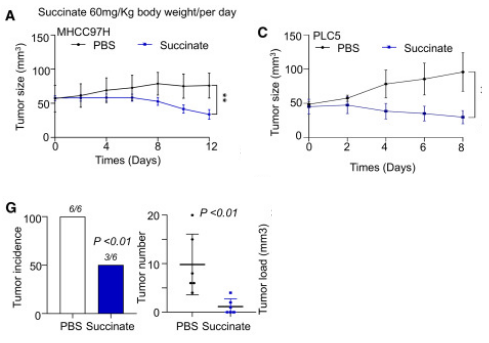
Succinate also decreased tumor incidence (3/6 mice in the succinate group vs. 6/6 mice in the PBS group, p < 0.01), tumor number (p < 0.01), and tumor load
, succinate also significantly suppressed the growth of subcutaneous PLC/PRF/5 xenografts (p < 0.01) and tumor weightVitamin E succinate didnt work well in ovarian https://pmc.ncbi.nlm.nih.gov/articles/PMC8176246/#sec11 can be high expression of SUCNR1 https://pmc.ncbi.nlm.nih.gov/articles/PMC7488939/ (but a dataset i saw showed similar between liver & ovarian?)
,
- the context is SUCNR1 was low in the liver. So it only applies to tumors with low SUCNR1
Otherwise adding succinate / activating SUCNR1 more = increased metastasis
e.g lung cancer
In lung cancer, succinate derived from the cancer cells activates the SUCNR1 receptor and facilitates tumor metastasis through the PI3K/AKT pathway
However, data from The Cancer Genome Atlas (TCGA) indicate that SUCNR1 expression is considerably decreased in liver cancer, suggesting a distinct role for succinate in liver cancer.Succinate binding to SUCNR1 activates several signaling targets, notably mitogen-activated protein kinases (MAPKs), and increases intracellular calcium and prostaglandin E2 (PGE2)
Succinate induced migration of LLC, A549, PC3, and HT-29 cells, which was blocked by antiSUCNR1 antibodies but not control IgG antibodies
. Furthermore, succinate induced invasion of LLC and HT-29 was similarly inhibited by SUCNR1 antibodies
succinate induces HIF-1a expression in a SUCNR1-dependent manner
Our results show for the first time that serum succinate concentrations are elevated in patients with lung cancer when compared to healthy subjects

- succinate induces HIF-1a and il-6 in macrophages via SUCNR1
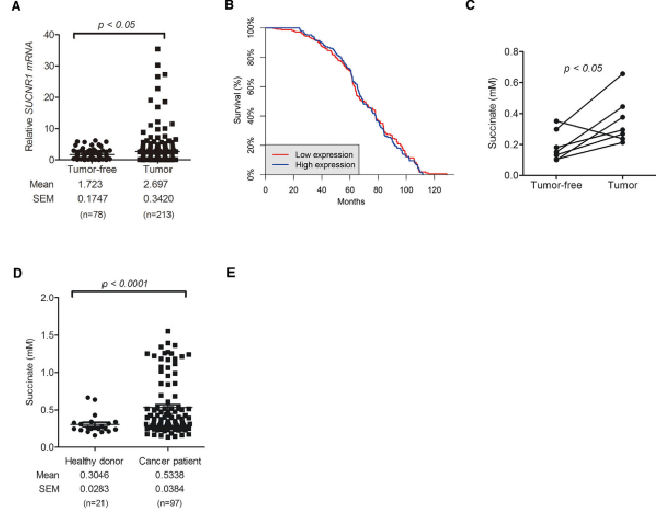
Kidney & lung especially high
https://v23.proteinatlas.org/ENSG00000198829-SUCNR1/pathology
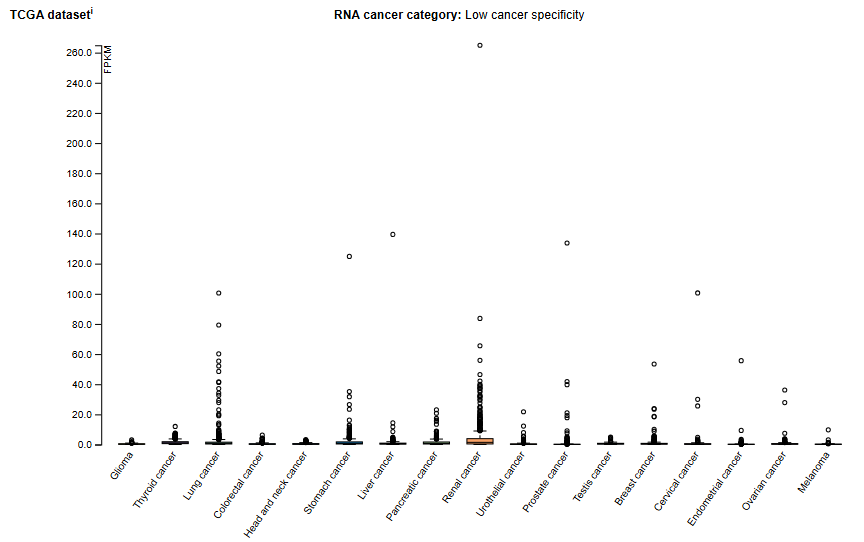
regression result worked for liver specifically
-
@Mauritio yes, each product has 2 COAs. https://goldcoastterpenes.com/safety/